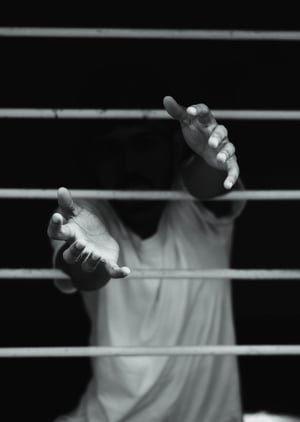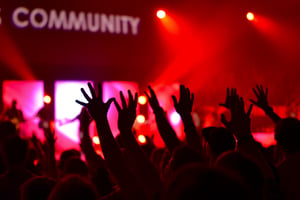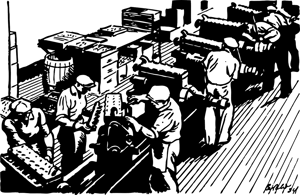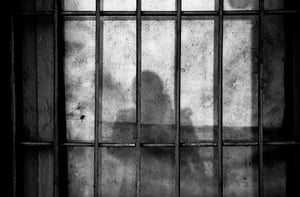Case workers in Juvenile Justice have long been concerned about a subversive movement in the back halls of Congress and many state houses to erase any distinction between young offenders and adult criminals. As recently as the 1990s almost all 50 states overhauled their juvenile justice laws, allowing more youths to be tried as adults and scrapping long-time protections to help rehabilitate delinquent kids and prevent future crimes. Only ignorance of the history of juvenile justice in United States could be responsible for a now subdued but continued movement to “simplify” criminal justice by merging juveniles and adults together in the eyes of the law. May we take a moment to remind everyone how our juvenile justice system evolved to its present effective state.
Topics: Juvenile Justice, caseworkers, social justice
“An 18-year-old sleeps in a doorway of a public building with nothing but a tattered blanket to shield him from the cold wind. He took little more than the clothes on his back when his foster parents demanded that he leave home. He hasn’t been in touch with his biological parents in years. None of his friends’ parents will allow him to spend a night on their sofa. And he’s unfamiliar with the nearest homeless shelter.” (Social Work Today, Vol. 19, P.24, Nadine Hasenecz, MSW, LSW)
Topics: Foster Care, social justice, Family and Child Welfare
COVID-19 Diagnoses in Juvenile Facilities
Known Cases as of June 24
658 youth, 771 staff
Annie E. Casey Foundation
“If there was ever a good time to make sure that not a single young person spends a single day in detention or placement unless there is an immediate and severe risk to community safety, this is it,” says Nate Balis, director of the Annie E. Casey Foundation’s Juvenile Justice Strategy Group. “This is the time for juvenile justice agencies to scrutinize every detention and placement decision and to review — if not reconsider — every policy that leans toward confinement.”
Topics: Juvenile Justice, social justice, Covid-19/Pandemic
The Headline
After years of writing about the mass incarceration of Americans, it gives us great pleasure to share this headline with everyone in the social services community.
Topics: Juvenile Justice, Government, social justice, Adult Re-Entry
We recently conducted an informal poll of the social workers we deal with every day and asked them what they thought was the #1 social malady threatening the country today. Their answer might surprise you; more than the opioid epidemic; more than veterans affairs; more than homelessness; more than woman’s rights; more than economic imbalance; more than education issues; more than civil rights; more than the environment; the problem that was cited more than any other was – STUDENT DEBT!
Topics: Government, education, social workers, social justice
Where have all the CDCs gone? For decades, Community Development Corporations tackled some of America’s most challenging problems: neighborhood revitalization, affordable housing, community economic development, workforce development and job creation, financial empowerment and food access.
Topics: Government, nonprofit funding, social workers, social justice
Henry Ford, not the US Labor Bureau, instituted the first major increase in the minimum wage. In January 1914, Henry started paying his auto workers a remarkable $5 a day. Doubling the average wage helped ensure a stable workforce and likely boosted sales since the workers could now afford to buy the cars they were making. It laid the foundation for an economy driven by consumer demand.
Topics: Government, social workers, social justice
How did the United States, with 5% of the global population but 25% of its prisoners, become home to the largest prison system in the history of the world? Some say it’s an accomplishment. The U.S. is a law and order country and our criminal justice system is the envy of the world. Others feel quite differently and suggest that the “war on drugs” led to the mass incarceration of two generations of the urban poor.
Topics: Government, criminal justice, social justice, Adult Re-Entry
Economic Imbalance: Social Worker's Salary vs. Burdensome Student Debt
In the past twenty years, student debt has become a major social and political issue in our country. As government guaranteed student loans became more widely available, colleges began to raise their tuition rates to keep pace with the expansion boom that ready government financing created. More students required more professors and facilities to accommodate their needs, and colleges needed more money to pay for the growth. The result, of course, is that students borrowed more and more money to pay inflated tuition and fees and subsequently became burdened with overwhelming debt.
Topics: Social Services Industry News, Government, Nonprofit General, education, social justice
We asked social workers who use our domestic violence software to help us understand what is going on with the sudden eruption of the #MeToo movement. Sweeping across the media landscape like wildfire, a tsunami of accusations began with Roger Ailes at Fox and Harvey Weinstein in Hollywood then quickly enveloped such well known T.V. personalities as Charlie Rose, Matt Lauer, Garrison Keilor, and Kevin Spacey. Even the most cynical among us was startled by the sudden collective outcry sent up by the women of Hollywood. What, we asked our colleagues, is going on here?
Topics: mental health, social justice, Victim Services










